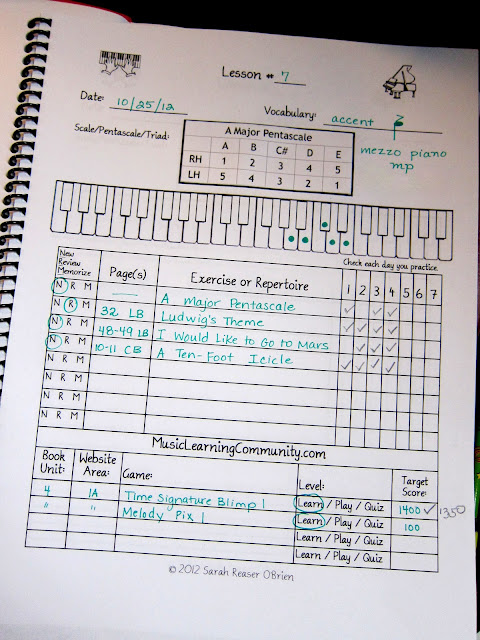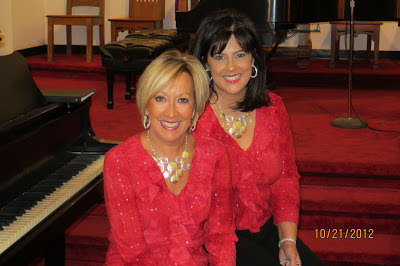This is one of a series of posts I will be doing on cool music apps for iPad. I'm starting with the first music app I bought when I got my iPad, forScore.
forScore
I'm a piano teacher, so I consider a music app valuable only if it provides ways to reinforce learning, or it makes a task we do easier or more convenient than the conventional way.
forScore is primarily helpful to me as a study tool, and I'd like to show you the top five ways I use it.
1. PORTRAIT OR LANDSCAPE VIEWING. I think it's a huge plus that this program allows you to view your music in vertical and horizontal orientations. Many similar applications do not have that capability. Here are some pictures of both views.
2. ZOOM. I like that you can pull the view in rather closely for focused study of a particular area of the music. Let's say that you want your student to isolate the left hand in the first four measures of the piece. You can zoom in to the point that the measures in question almost fill the screen.
 |
In this view, you may notice that I have drawn a red
box around a four-measure area of the piece. |
 |
This view shows how you can zoom in on the desired area
for closer, focused study. |
3. EASY TO MAKE ANNOTATIONS. With a tap on the center of the screen, a toolbox of annotation options appears along the top of your music. It's really easy to draw things like the red box above or the blue one below. You just use your finger or a stylus directly on the screen and mark up the music any way you like. If you make a mistake or no longer need your marks, you can undo, erase, or clear all annotations.
 |
The little bar at the bottom of the pop-up window allows you to
make your "pen" thicker or thinner. |
4. ADD ACCIDENTALS AND OTHER SYMBOLS. If you should need to add reminders of sharps, flats, dynamic marks, and other symbols, there is a tool for that as well. In the example below, I am adding a flat sign to the A-flat in the left hand of measure 2, beat 2.
5. HIGHLIGHT AREAS OF THE MUSIC. Want your student to repeat a small passage several times? You can highlight the exact spot for her. Highlights can be removed easily if desired.
forScore displays pdf files of music. You can download pdf's galore for free from the Petrucci Music Library at
imslp.org, or you can scan your own music into a pdf format. I do both. Most of the scores I use with this app are multi-page documents, and forScore allows for rapid page-turning. I'm not crazy about how the pages turn upward, the way they do on a legal pad, but they do turn quickly.
Here's a quick summary.
Name of app: forScore
Cost: $4.99
Pros: Great for close study of music and making annotations; easy to use.
Cons: Not the best app for performance; pages turn upward; doesn't have automatic page-turning.

















































